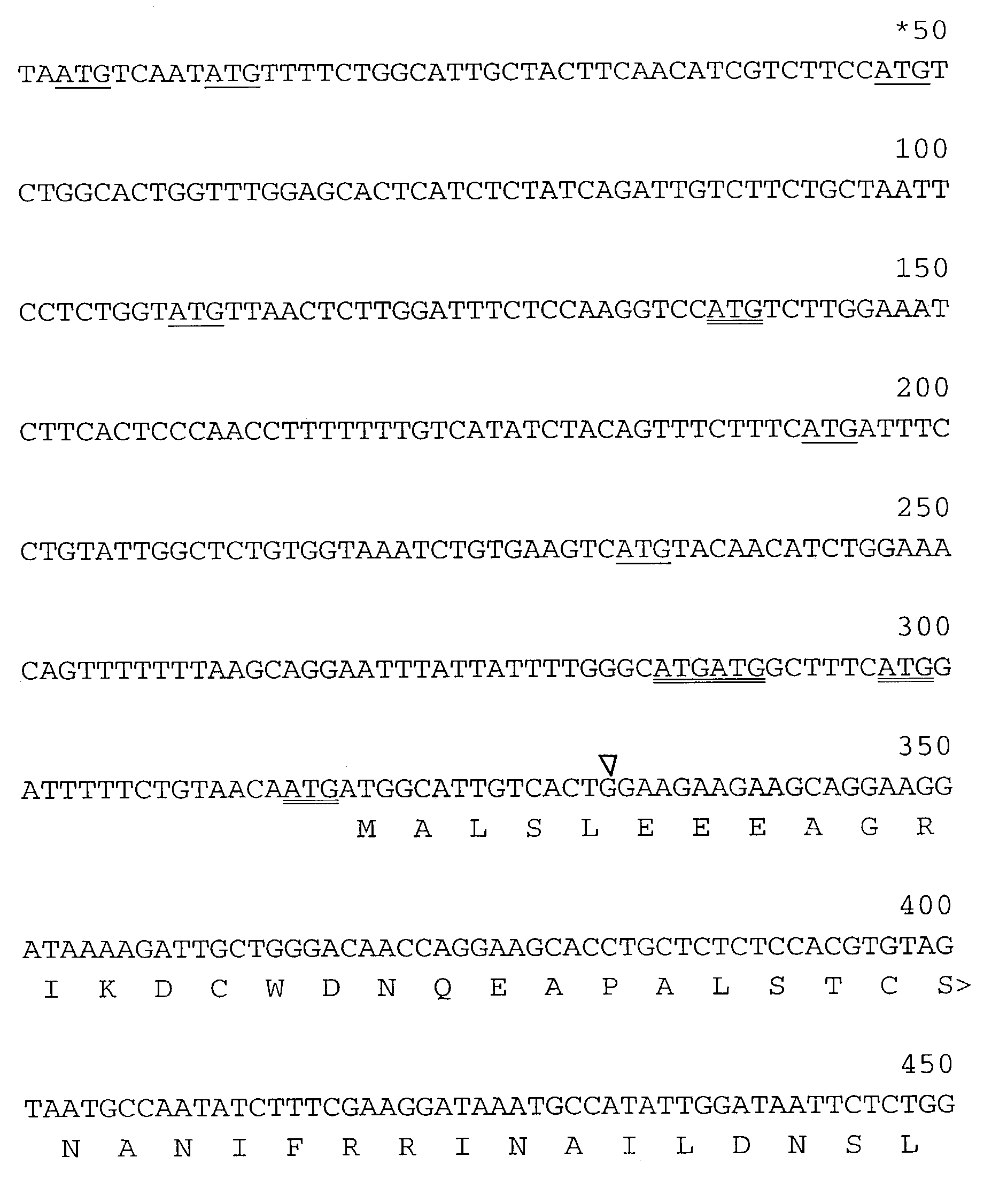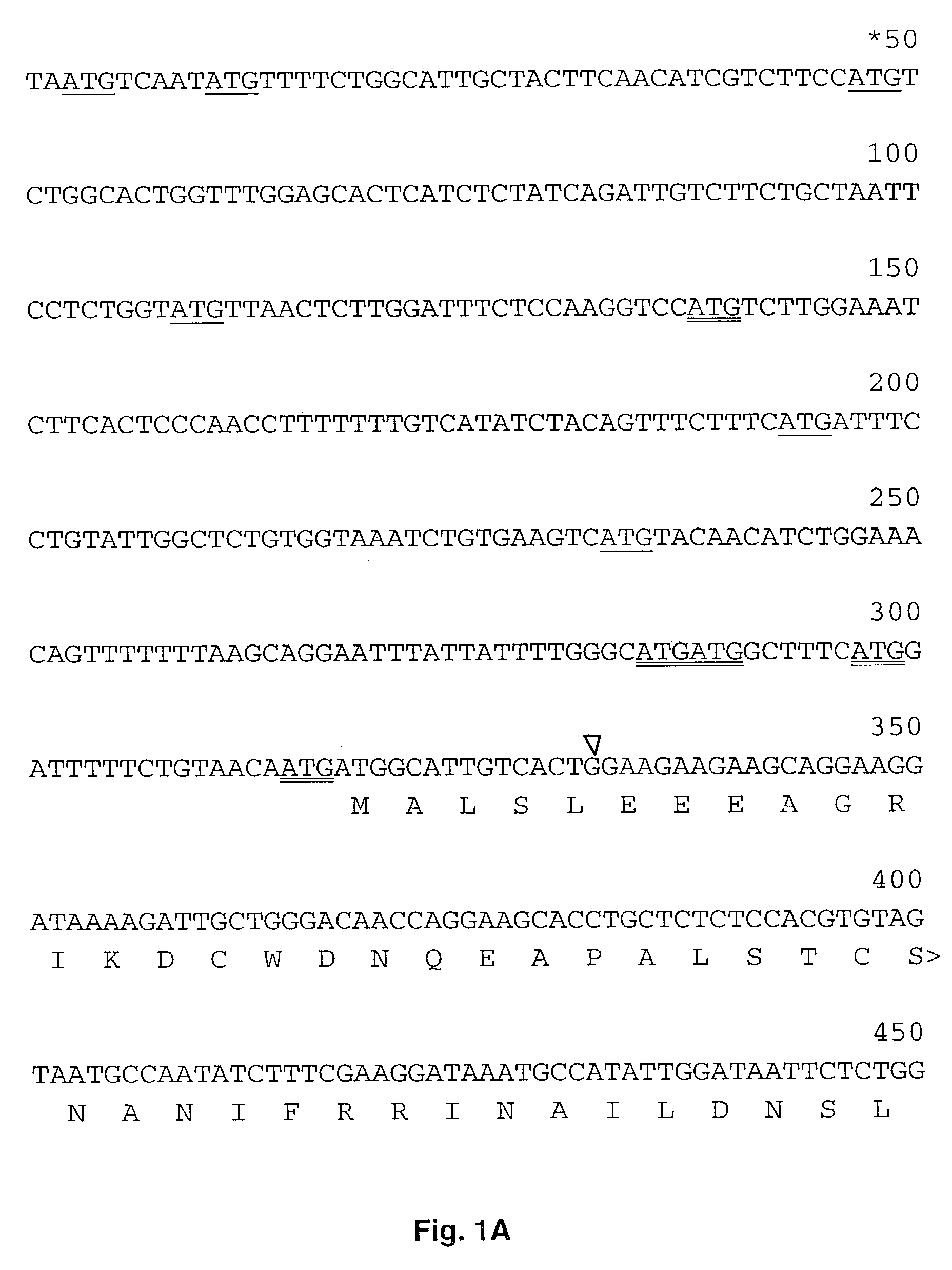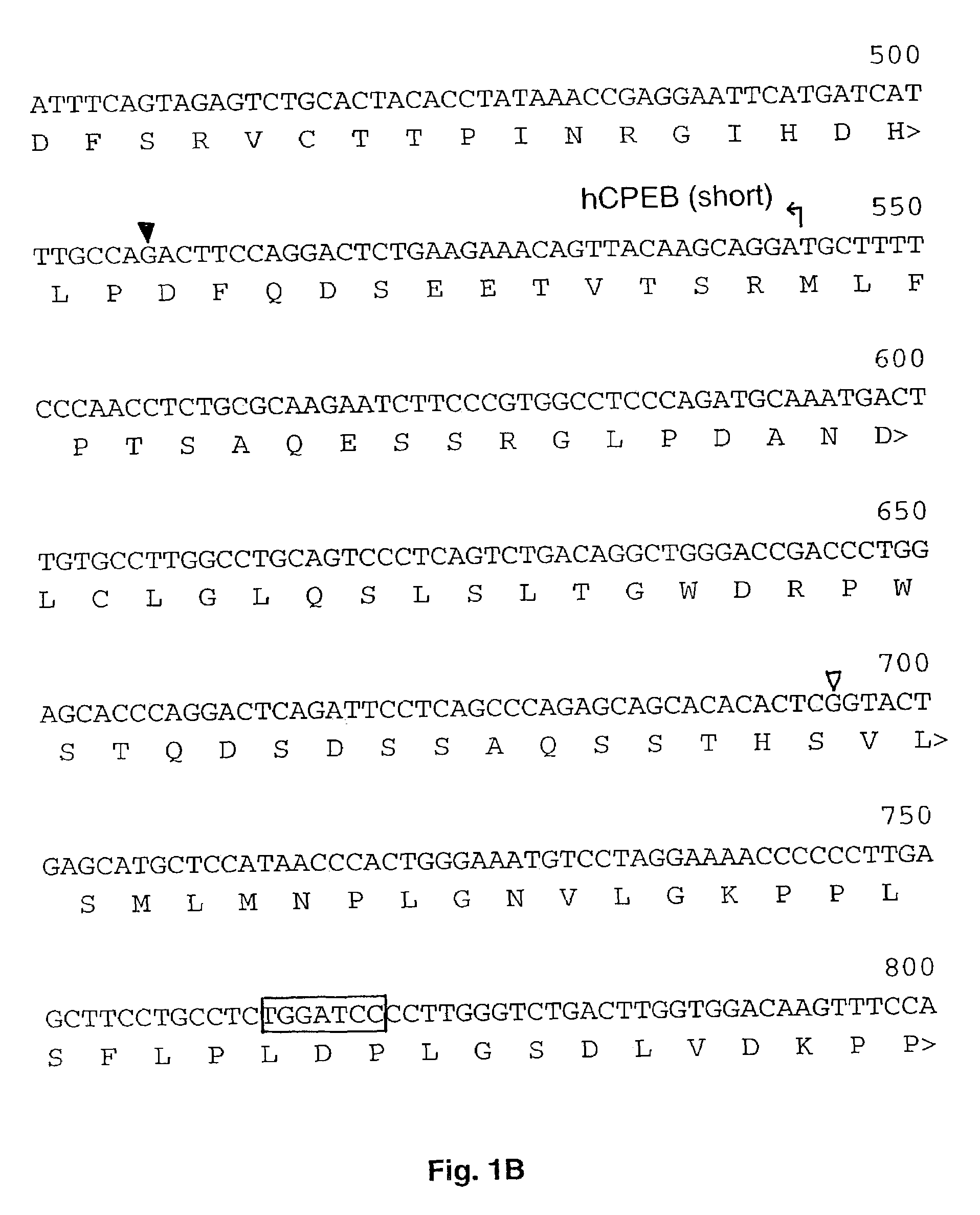Human cytoplasmic polyadenylation element binding protein and uses thereof
- Summary
- Abstract
- Description
- Claims
- Application Information
AI Technical Summary
Benefits of technology
Problems solved by technology
Method used
Image
Examples
example 1
Plasmids Constructs and RNA Synthesis
[0048]Plasmid pGEM XeMos wt UTR was constructed as follows. The terminal 321 nucleotides of the Mos 3′ UTR was cloned from immature oocytes by reverse transcription polymerase chain reaction (RT-PCR) to make pGEM Mos 321 UTR (Howard et al., 1999). A primer with a 5′ BamHI site (+) GCGGG ATCCA TTCCA TATGT GAATA TATAG (SEQ ID NO. 11) was designed to amplify the last 48 nucleotides of the Mos 3′ UTR from pGEM Mos 321 UTR. The reverse primer was the T7 promoter primer TAATA CGACT CACTA TAGGG (SEQ ID NO. 12). The PCR product was cut with BamHI / HindIII and inserted into BamHI / HindIII digested pGEM4Z. The size of the probe after in vitro transcription with SP6 RNA polymerase was 82 nt (48 nt that correspond to Mos UTR, and 34 nt that derive from the pGEM polylinker). The integrity of the probe was confirmed by DNA sequencing.
[0049]Plasmid pGEM XeMos mut UTR was constructed as follows. The terminal 321 nucleotides of the Mos 3′ UTR was cloned from immatu...
example 2
Northern and Southern Blot Analyses
[0051]Human multiple tissue northern blots (2 μg polyA+RNA per lane) (Clontech) were probed with a 1326 bp BamHI / XcmI fragment of clone H12139 radioactively labeled using the random primer labeling kit (Pharmacia) and [α-32P]dCTP (Amersham). Following overnight hybridization at 55° C., the membranes were washed twice in 1×SSC (0.15 M NaCl, 0.015 M sodium citrate)-0.5% SDS for 10 min at 55° C. and twice in 0.1×SSC-0.1% SDS for 30 min at 55° C. and analyzed by autoradiography. For Southern analysis, 10 ug of human genomic DNA was digested with the indicated enzymes, transferred to nitrocellulose and probed with a multimerized probe corresponding to nucleotides 543–765 of hCPEBL. Filters were washed twice with 2×SSC, 0.1% SDS for 10 min at room temperature and twice 0.1×SSC, 0.1% SDS for 30 min at 65° C. and analyzed by autoradiography.
example 3
Human Oocyte Harvest and RT-PCR Analysis
[0052]Germinal vesicle-intact human oocytes were collected from consenting patients following a protocol approved by the Institutional Review Board at the University of Michigan. Oocyte-cumulus masses were collected into HEPES-buffered human tubule fluid media containing 3% (vol / vol) human serum albumin (HTF-H3; Irvine Scientific, Santa Ana, Calif.) by transvaginal follicular aspiration after controlled ovarian stimulation (Pool and Martin, 1994). Cumulus and corona radiata cells were removed by brief exposure to HTF-H3 containing 80 IU hyaluronidase (Sigma, St. Louis, Mo.) followed by mechanical pipetting through flame-pulled Pasteur pipettes. Complete absence of non-gamete cells and presence of germinal vesicle were confirmed using an inverted microscope with Hoffman optics at 400×. Germinal vesicle-intact oocytes were pooled, frozen in liquid nitrogen and stored at −80° C. until analyses were performed. RT-PCR was performed as described bel...
PUM
 Login to View More
Login to View More Abstract
Description
Claims
Application Information
 Login to View More
Login to View More - R&D Engineer
- R&D Manager
- IP Professional
- Industry Leading Data Capabilities
- Powerful AI technology
- Patent DNA Extraction
Browse by: Latest US Patents, China's latest patents, Technical Efficacy Thesaurus, Application Domain, Technology Topic, Popular Technical Reports.
© 2024 PatSnap. All rights reserved.Legal|Privacy policy|Modern Slavery Act Transparency Statement|Sitemap|About US| Contact US: help@patsnap.com










